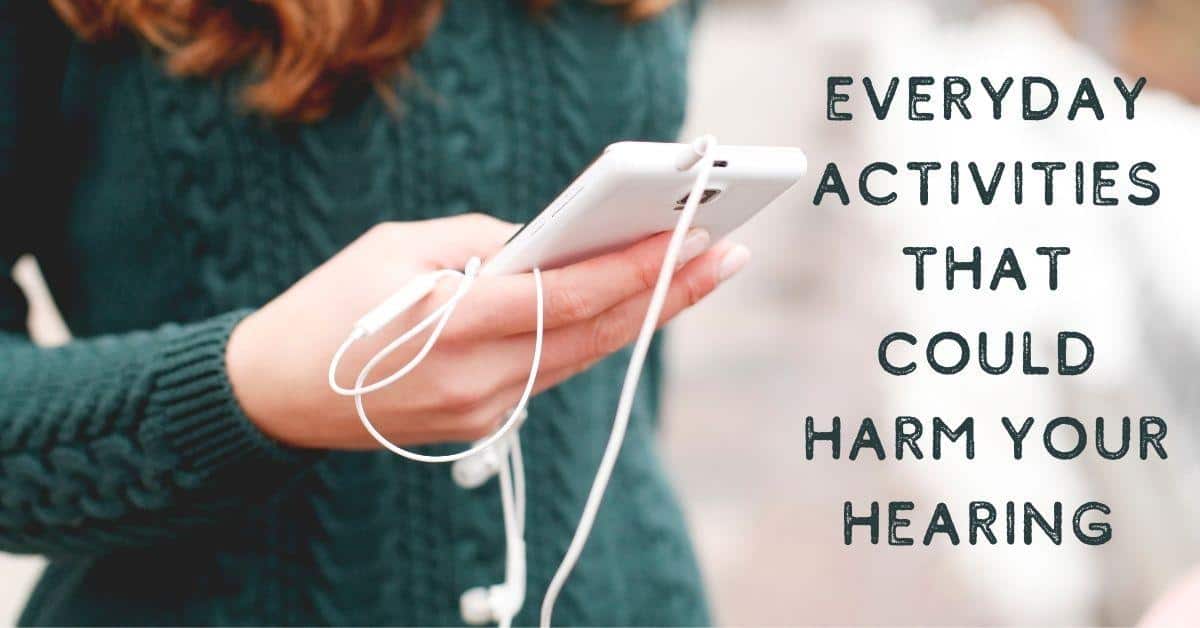
- How Spending Time Outdoors Enhances Hearing Health - July 16, 2024
- Exploring the Impact of Sports on Hearing Health - July 3, 2024
- The Impact of Diet on Hearing Loss - June 28, 2024
While it may be inevitable that those who live long enough will suffer from hearing loss (nearly 100% of centenarians have it), there’s no guarantee of how bad it needs to be. Age-related hearing loss can range from mild to profound, and the more we do to protect our ears throughout our lives, the better our quality of hearing—and life—will be.
Unfortunately, as many as 40% of us are harming our ears on a daily basis, in many cases without knowing it. While it might be obvious that we should wear earplugs at music concerts, many of us don’t. Sports events are also a danger to our ears, and most of us don’t think of wearing earplugs at a football or basketball game. We should! Around 15% of Americans suffer from hearing loss, and it’s estimated that as many as 19% of teenagers have measurable hearing loss.
Once hearing is lost due to damage from noise, it doesn’t come back. While the ringing in your ears after an acute session with extreme noise levels may subside after a day or two, hearing loss is permanent.
Dangerous Noise Levels
While we should start thinking about which activities we participate in involve dangerous noise levels, we should also think about what level a noise has to reach to be dangerous.
Sound can cause noise-induced hearing loss (NIHL) starting at about 85 dBA (decibels A-weighted) after eight hours of exposure. It’s a tricky area here; some say noise levels are safe for eight hours until 90 dBA, others say 75 dBA. It’s best to play it safe, but also remember that unless you’re exposed for eight hours, you’ll definitely be fine with sounds under 70 dBA.
For every increase of 3 dBA, the time it takes for hearing loss to set in is cut in half. Here’s an idea of what that can mean, keeping in mind things are a little different for everyone:
- 85 dBA – 8 hours
- 88 dBA – 4 hours
- 91 dBA – 2 hours
- 94 dBA – 1 hour
- 97 dBA – 30 minutes
- 100 dBA – 15 minutes
You get the idea: we are coming very close to immediate hearing damage when we get above 100 dBA.
But what do these numbers relate to? What kinds of things might we encounter that could harm our hearing?
Examples of Sounds in Three Danger Ranges
Sounds in the 80-89 dBA range include your alarm clock, garbage disposal, heavy traffic, gas-powered lawn mowers, snowblowers, and window air conditioning units. This is about the amount of sound you would experience in a busy restaurant. If you’re around this amount of sound for less than 4-8 hours, you should be safe from hearing loss.
From 90-100 dBA we find sounds like the subway train, shouting, boom boxes, hand drills, food processors, belt sanders, ATVs and motorcycles. In this range you’re ok for a little bit, but if you’re riding a motorcycle or ATV all day, working on a long project with a belt sander, or experiencing a cascade of sounds at this decibel level throughout the day, you should wear hearing protection.
Above 100 dBA you definitely want to protect your ears. Here we have sounds like rock concerts, sporting events, table saws, chain saws, jackhammers, leaf blowers, snowmobiles and gunshots. It’s also worth noting that the average school dance sits at about 105 dBA, but how many kids wear earplugs at the school dance?
Wear Earplugs
Protecting your hearing throughout your life should be a major priority. It’s easy to get used to carrying a set of earplugs in your pocket, purse or backpack. Always keep them handy. This could be a disposable set or a reusable set. Those who frequently attend or perform at concerts may wish to invest in a quality set of custom-fit earplugs. These not only protect the sensitive listening instruments we call “ears” but also maintain an even amount of attenuation across the frequency spectrum, making the listening experience vastly more pleasurable.
Use Decibel Meter Apps
Decibel meter apps are available for smartphone devices. Most are free of charge. If you’re unsure whether an environment is safe or not, you can use one of these apps to find out. If it’s in a danger range, pull out your earplugs and keep your ears safe. Your future self will thank you!
Get a Hearing Test
Finally, if you think you might be suffering from hearing loss, get a hearing test today. Those who are regularly exposed to sounds in the danger ranges should have their hearing tested once a year. If hearing loss is measured, you can talk with our team about how to prevent further hearing loss.
